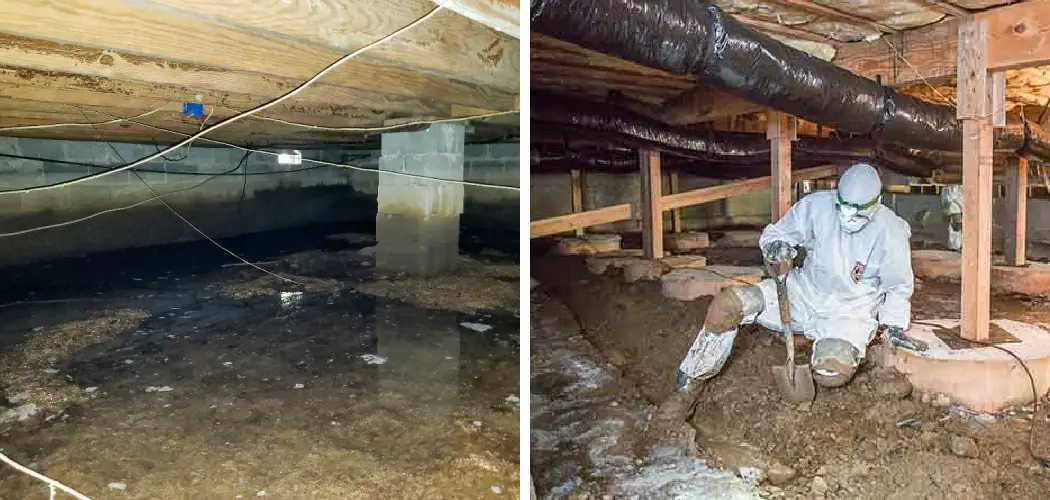A sump pump effectively removes water from the crawl space, but it is not always necessary. In some cases, there are other ways to reduce or eliminate the amount of water in the crawl space without needing a sump pump. The most important step in getting water out of the crawl space without a sump pump is to identify the source of the water. There are several advantages to getting water out of a crawl space without a sump pump.
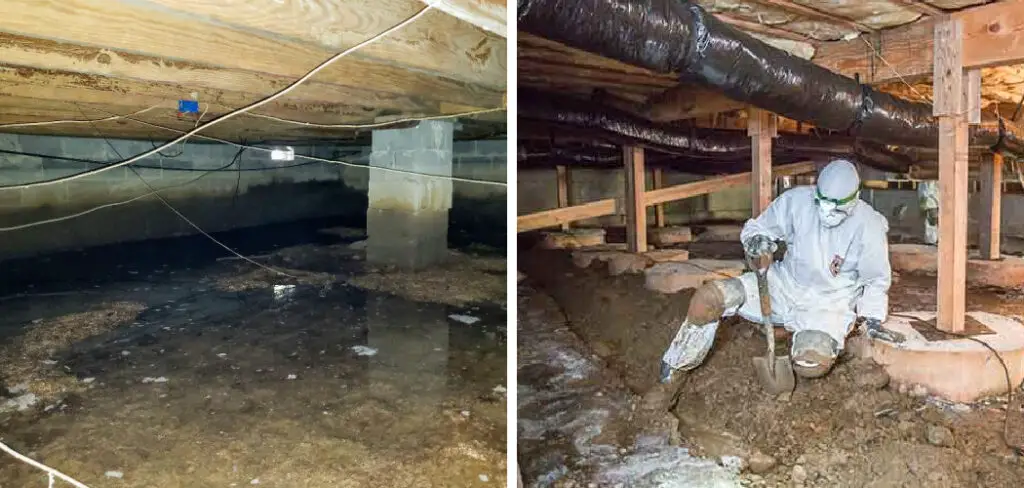
The most obvious is that it eliminates the need for costly installation and maintenance of a sump pump. Additionally, this method requires little or no electricity and can be done without special tools or equipment. It is also very cost-effective and can eliminate standing water quickly and efficiently. You can find step-by-step instructions on how to get water out of crawl space without sump pump in this blog article.
How Can You Identify When There is Water in Your Crawl Space?
When you suspect that there is water in your crawl space, you should pay close attention to the signs. Look for dampness and moisture on the floor and walls of the crawl space. If it smells musty or mildewed, this can indicate the presence of mold or mildew caused by standing water.
You might also see pools of water or water seeping from the walls and floor. If you don’t have access to the crawl space, look for signs of water damage on the ceilings and walls above it. Once you identify that there is water in your crawl space, then you can take steps to begin getting it out without a sump pump. The most important part of this process is determining the water source in the crawl space.
What Are the Potential Sources of Water Entering My Crawl Space?
Crawl spaces can be a potential source of water in your home. Water can enter through cracks or openings in the walls, vents, or foundation and runoff or drainage near the area. If your crawl space has no sump pump installed, it is important to identify any potential water sources before attempting to remove it.
One of the most common sources is rainwater and runoff. This water can enter through vents, windows, cracks in the walls or foundation, and other openings. It’s important to check your crawl space regularly for any signs of moisture or water damage. If you notice any standing water, it should be immediately removed before mold or mildew can start to grow.
Materials & Supplies You Will Need
- Wet/Dry Vacuum
- Shop Vacuum
- Water Pump
- Hose
- Shovel
- Bucket
- Towels or Rags
- Dehumidifier
- Extension Cord
- Flashlight/Lantern (for light in the crawl space)
Step-by-step Instructions for How to Get Water Out of Crawl Space Without Sump Pump
Step 1: Inspect the Crawl Space
Inspect the crawl space to determine where the water is coming from, and note any areas that may be contributing to the issue. Look for drainage problems that are causing water to pool in your crawl space, such as a blocked gutter or downspout. Ensure you address these issues so they don’t continue contributing to the problem.
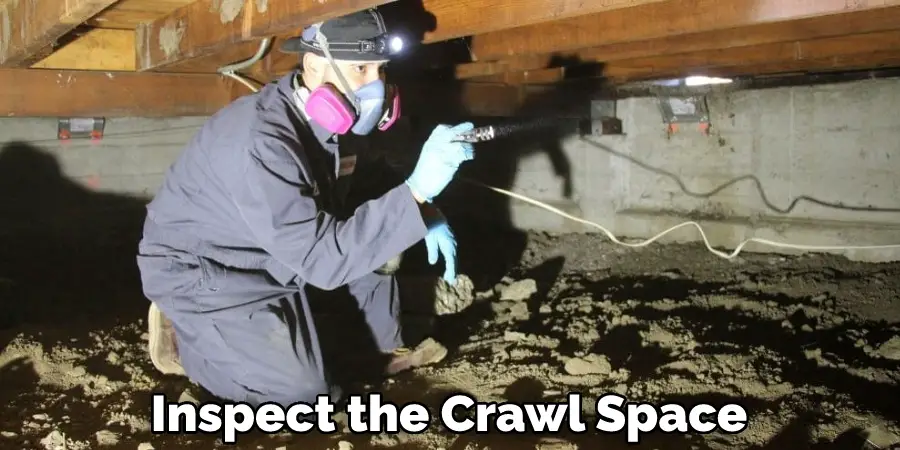
Step 2: Install a Drainage System
If your crawl space collects water due to surface runoff, you can install a drainage system to collect and remove the water. Use perforated pipes and landscape fabric to create under-floor channels that will direct the water away from the crawl space into underground storm drains or other areas where it can be safely disposed of.
Step 3: Install a Dehumidifier
Another way to get water out of your crawl space without a sump pump is to install a dehumidifier. If the amount of water in the air is causing the problem, a dehumidifier can help reduce the humidity and absorb excess moisture from the air. Make sure to use a dehumidifier that’s designed for use in crawl spaces since these models are specifically built for this type of environment.
Step 4: Seal all Entry Points
Finally, seal any entry points where water might be entering your crawl space. Caulk around windows, doors, and other openings to prevent water from entering the crawl space in the first place. Doing this can help to reduce future water issues in your crawl space and save you from having to deal with them again.
By following these steps, you’ll be able to get water out of your crawl space without a sump pump and keep it from returning in the future. This can help protect your home from excess moisture and humidity and save you from dealing with costly repairs.
Tips for How to Get Water Out of Crawl Space Without Sump Pump
- Ensure the area is well-ventilated, as inhaling mold spores can be hazardous to your health.
- Wear protective clothing such as gloves and a mask while dealing with the water.
- Inspect the crawl space thoroughly for any damaged pipes or any other signs of damage that could have caused the flood in the first place.
- Disconnect any electrical connections before beginning any water removal process.
- Make sure all appliances have been removed from the area.
- Use a shop vacuum to remove standing water, although this may not be suitable for larger quantities of water.
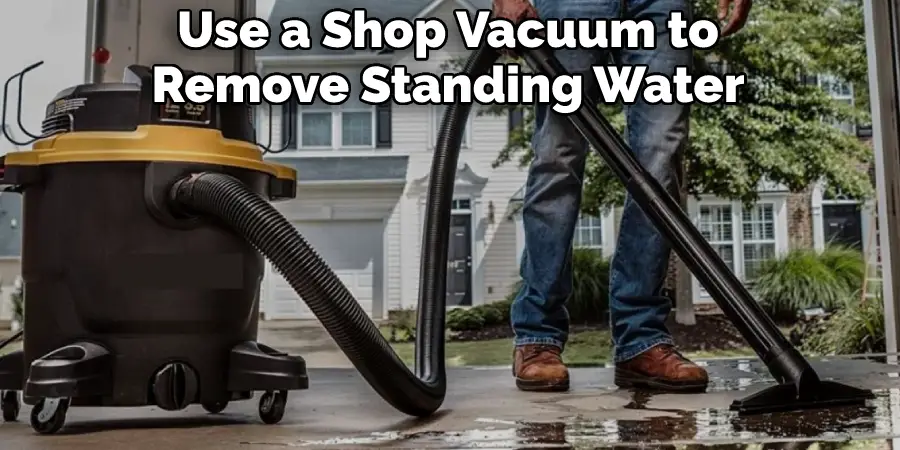
- Clean the crawl space with bleach or another disinfectant specifically made for removing mold and mildew growth in such an environment.
- Make sure to dry the area completely before replacing any insulation or closing up the space. This can be done by using a dehumidifier. It is important to get rid of all moisture to prevent mold, mildew growth, and structural damage such as rotting wood.
Following these tips should help you safely and effectively get water out of your crawl space without a sump pump.
How Can You Prevent Any Further Water From Coming Into Your Crawl Space?
- Install a perimeter drainage system around the exterior of your home’s foundation. This will help to prevent water from collecting and pooling near your house, where it could potentially seep into your crawl space.
- Check outside plumbing regularly for leaks or broken pipes and fix them as soon as possible to avoid flooding and water damage to your crawl space.
- Install gutters on your roof to help divert rainwater away from your home’s foundation. Ensure they are installed correctly and cleaned out regularly so that water cannot overflow or back up.
- Consider waterproofing the interior walls of your crawl space to create an additional barrier against moisture.
- Make sure the grade of the land around your home slows away at least 6 inches per foot, so that water will not accumulate around or near your foundation walls.
- Ensure that any downspouts near your foundation are properly connected to a drain pipe and away from home.
- Apply a sealant to any cracks or openings in your foundation walls, window frames, doors, vents, etc., to prevent water from seeping into your crawl space.
Taking these steps can help reduce the chance of water entering your crawl space without a sump pump. Regular maintenance and inspections of your home’s exterior can also help to keep water out.
How Often Should You Inspect Your Crawl Space for Signs of Water or Moisture Buildup?
It is important to regularly inspect your crawl space for signs of moisture buildup or water intrusion. A common indication that you must take steps to get water out of your crawl space is musty odors or visible mold growth. Make sure to check all exposed surfaces, including floor joists and insulation, for any signs of moisture accumulation. You should also check the walls and floor for any cracks or holes that may allow water to enter.
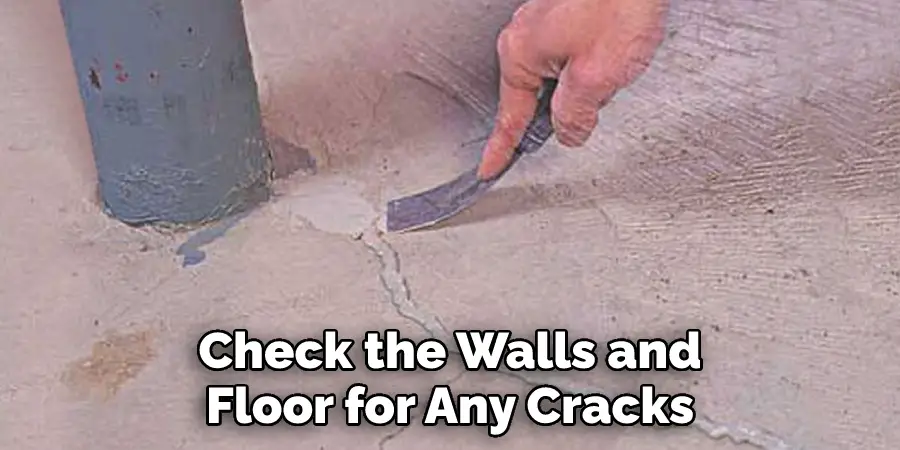
If you notice signs of moisture in your crawl space, there are several steps you can take to get water out without a sump pump. First, try identifying the source of the water intrusion, as this will help prevent future issues. Common water sources in crawl spaces include plumbing leaks, broken gutters or downspouts, and flooding. Once the source is identified, you can take steps to stop further water infiltration.
How Do You Know When Professional Assistance is Needed to Address Water Issues in Your Crawl Space?
When dealing with water in your crawl space, it is important to determine when professional assistance is necessary. If you notice large amounts of water accumulation in your crawl space or if the water is continuously rising, it might be time to call a professional. This could be due to over-saturation of the soil around the home or a possible break in the foundation or walls of your home. It is important to have an experienced professional inspect any water issues and determine the best course of action for mitigating the problem.
Additionally, if you notice a musty smell or see mold or mildew accumulations, it’s best to call a specialist to identify and address the source of the water issue. Lastly, if you have a history of flooding or high water levels in your area, it is important to take preventative measures and hire a professional to help protect your home from potential damage. By following these steps, you can get water out of the crawl space without a sump pump and address any underlying issues that could be causing the water to accumulate in your crawl space.
Conclusion
In conclusion, getting water out of a crawl space without a sump pump requires special attention to detail. Taking the time to properly inspect for signs of water damage and address any potential problems can help avoid costly repairs down the road. It also helps to close off vents and air gaps to prevent outside moisture from entering the area, as this can add up over time.
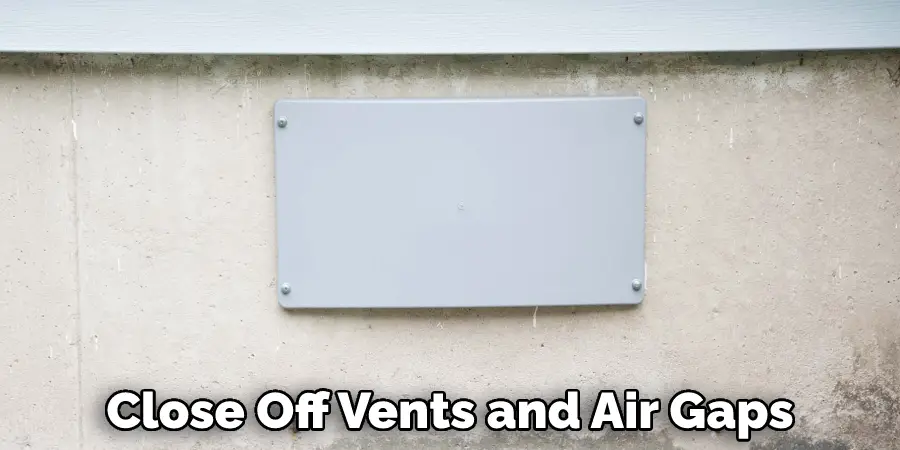
Furthermore, creating a surface that allows water to run away from the foundation can also help minimize the amount of water that accumulates in the crawl space. I hope reading this post has helped you learn how to get water out of crawl space without sump pump. Make sure the safety precautions are carried out in the order listed.

